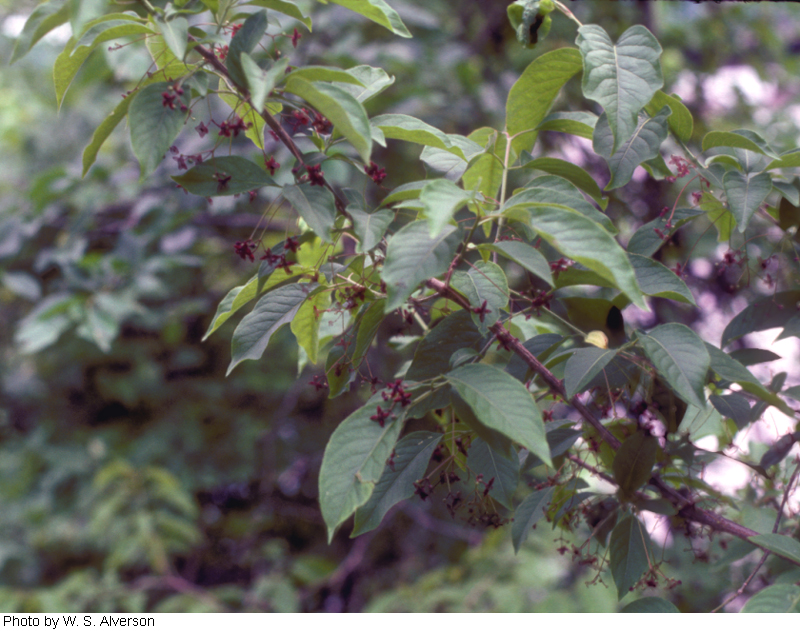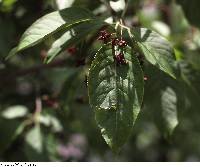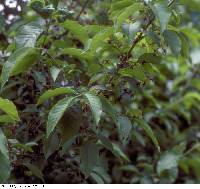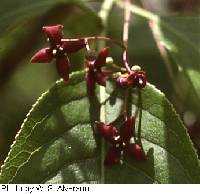Shrub to small tree to 6 m tall
Leaves: opposite, stalked (1 - 2 cm long), bright to dark green above, pale and hairy beneath, 6 - 12 cm long, 2.5 - 5 cm wide, egg-shaped to inversely egg-shaped with a wedge-shaped base and pointed tip, finely toothed. Leaves become yellow in fall.
Flowers: borne in clusters of seven to fifteen in leaf axils, stalked (2 - 5 cm long), 6 - 8 mm wide with four dark purple petals.
Fruit: a purple to red capsule, 1.5 cm wide, deeply four-lobed with some lobes occasionally reduced, splitting open to reveal brown seeds with a bright red coating (aril).
Bark: gray, thin, smooth, covered with tiny scales.
Twigs: slender, purplish green, becoming brown with age, nearly four-angled, with prominent corky spots (lenticels).
Form: irregular, with spreading branches.
Similar species: Similar Euonymus species of the Chicago Region can be distinguished by a few key characteristics. Euonymus alata has distinctly corky, two- to four-winged stems. Euonymus bungeanum has yellowish green flowers with purple anthers, pink to yellowish fruits with pinkish orange coated seeds, and leaf stalks over 12 mm long. Euonymus europaea has yellowish green flowers with yellow anthers, yellow to pink fruits with orange coated seeds, and leaf stalks less than 12 mm long. Euonymus hamiltoniana has greenish white flowers with purple anthers, pink to purple fruits with orange to red coated seeds, and leaf stalks less than 12 mm long.
Flowering: late May to early July
Habitat and ecology: Euonymus atropurpurea is most common in the southwestern Chicago Region, growing in shaded floodplains and along wooded stream banks.
Occurence in the Chicago region: native
Notes: The fruit is eaten by birds, and deer and rabbits feed on the stems and leaves. Native Americans once used this plant's straight stems to make arrows. In fact, the common name wahoo comes from the Dakota words wa, meaning arrow, and hu, meaning wood.
Etymology: Euonymus is the ancient Greek name for the genus. Atropurpurea comes from the Latin words atro,meaning dark, and purpureus, meaning purple, referring to the fruits and flowers.
Author: The Morton Arboretum




